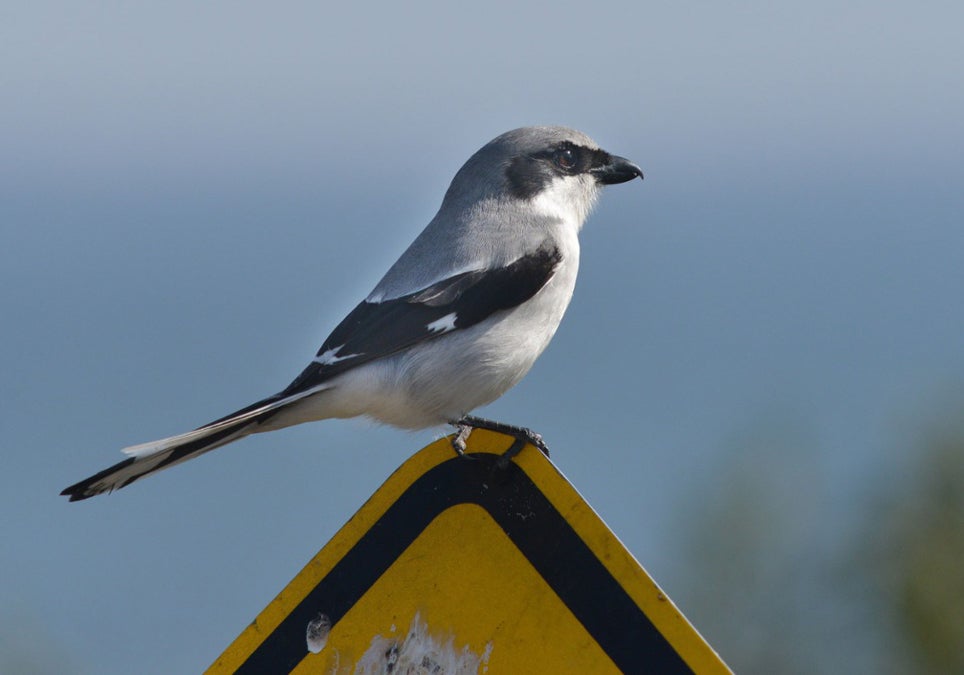
La página que intenta visitar sólo está disponible en inglés. ¡Disculpa!
The page you are about to visit is currently only available in English. Sorry!

When it comes to songbirds, shrikes are a bloodthirsty bunch. They’ve earned the name “butcher birds” for the way they impale their prey on thorns or barbed wire. Preferring to hunt in open areas, they'll perch on the very top branches of trees or on powerlines to watch for prey. Their targets can include anything from cardinals and lizards to grasshoppers and mice.
Here in North America we have exactly two species of butcherbirds: the medium-sized Northern Shrike (also know as the Great Grey Shrike) and the somewhat smaller Loggerhead Shrike. If you live in the northern United States, you can see the Loggerhead Shrike in summer and the Northern Shrike in winter (they breed up in the taiga and tundra). In the extreme southern states, you only get the Loggerhead year round. But what do you do in the middle of the country where their winter ranges overlap? The secret to identifying adult shrikes is all in the face. Hover over the points on the photos below to reveal some of the key differences.

Other notes: The immature version of this bird is much grayer, and has dark barring across its chest. In flight, the white "hankerchief" on the wing is more prominent than on the juvenile Northern.

Other notes: In immature Northern Shrikes, the mask is practically a smudge and barely visible. The young birds are also more brown than gray.
Species that shrikes might be confused with include Northern Mockingbirds, Clark’s Nutcrackers, and Townsend’s Solitaires. Yet their hooked beaks, beefy heads, and distinct behavior set them apart from other birds. (Any blood is also a good clue.) If you see a passerine hovering and hunting in a clearing, there’s no doubt: You’re about to see a butcherbird get down to business.
For more diagrams and side-by-side comparisons of the two species, check out this nifty guide by Canadian ornithologist Ron Pittaway.